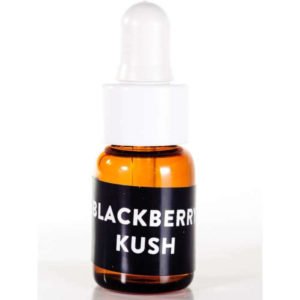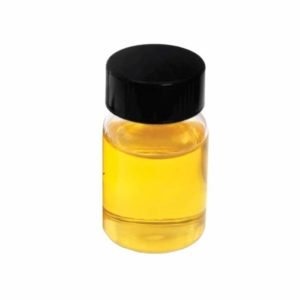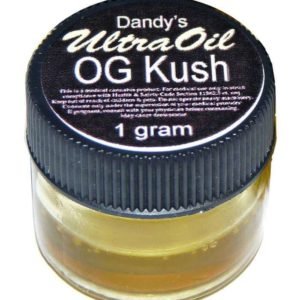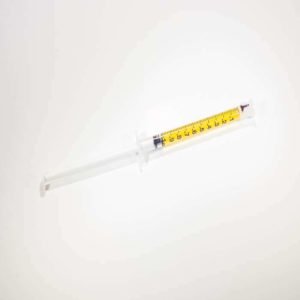CANNABIS OILS
6 Benefits and Uses of CBD Oil (Plus Side Effects)
CBD oil is one of the most popular health trends today. There are many benefits to taking it regularly, including helping you sleep better, reducing pain, and even improving your mood. But what about side effects? What does it do to your body? And how safe is it? We break down everything you need to know about CBD oil here.
1. CBD oil helps reduce anxiety. Many people use it to help relax during stressful times. If you suffer from insomnia, CBD could also help you fall asleep faster.
2. CBD oil relieves pain. Studies show that CBD oil can help treat chronic pain like arthritis and neuropathy. In fact, some doctors claim that it works better than opioid drugs such as morphine.
3. CBD oil improves sleep quality. Research suggests that CBD oil can improve sleep quality. Some studies found that CBD oil helped people sleep longer and more deeply. Others found that it improved sleep cycles.
4. CBD oil reduces inflammation. Medical experts agree that CBD oil can reduce inflammation. This makes sense because CBD oil is derived from hemp, which contains less THC than marijuana.
5. CBD oil promotes healthy skin. A 2017 study showed that CBD oil can help prevent acne. Another study found that CBD oil can kill acne bacteria.
6. CBD oil boosts appetite A study published in the Journal of Nutrition suggested that CBD oil can boost hunger levels. Other research found that CBD oil can increase metabolism rates and burn fat.
CBD Oil: Uses, Health Benefits, and Risks
“The CBD Oil Market Is Booming: Here’s How You Can Get In On It.”
Cannabidiol (CBD), one of many compounds found in cannabis plants, has become increasingly popular over the past few years. Many people are now turning to it as a natural treatment for anxiety, pain relief, sleep disorders, inflammation, seizures, epilepsy, and even cancer.
But what exactly is CBD oil? And how does it work? We break down everything you need to know about CBD oil here.
#1 Rated CBD Hemp Oil Product: 5,500+ Positive Reviews; Available Now!
#2 CBD Brand: Now Offering a Free Trial!Questions About CBD Oil
What is CBD oil?
CBD oil is one of the most popular products sold online today. What exactly is it? And what does it do?
The term “Cannabidiol,” or CBD, refers to the chemical compound found within cannabis plants as an “active ingredient.” Unlike THC, the psychoactive component of marijuana responsible for getting people high, CBD isn’t psychoactive.
In fact, it doesn’t make you feel anything at all. Instead, CBD helps regulate our bodies’ functions, especially those related to anxiety and pain relief.
In recent years, scientists have begun studying CBD because of its potential benefits. Preliminary studies suggest CBD could help treat epilepsy; some research even suggests it could reduce seizures among children with epilepsy.
Other studies show CBD might help relieve symptoms of anxiety and depression. But despite growing interest in CBD, many consumers still don’t know much about the product. So we asked experts to explain what CBD is, how it works, and whether there are risks involved.
What is CBD oil?
CBD oil is derived from hemp, an industrial plant closely related to marijuana. Hemp contains less than 0.3% THC, the psychoactive ingredient in marijuana.
Unlike marijuana, hemp cannot produce the same intoxicating effects. CBD oil extracted from hemp contains no THC. However, CBD oil extracted from marijuana contains varying amounts of THC. When purchasing CBD oil online, look for brands that disclose their CBD/THC ratios.
How does CBD work?
Where does CBD come from?
CBD oil is one of the most popular products sold online today. But what exactly is it? And where do you even start looking for it? We break down everything you need to know about CBD oil.
5. Exercise may be beneficial to heart health.
The benefits of eating fish are well known, but did you know it could help improve your heart health too? Omega-3 fatty acids found in oily fish like salmon and trout are associated with lower rates of cardiovascular disease and stroke.
In fact, a study published in the European Journal of Preventive Cardiology suggests that people who eat one serving of fish per week have a 25 percent lower risk of dying early due to cardiovascular disease.
Medical cannabis (cannabis oil)
– NHS
A recent study published in JAMA Internal Medicine found that medical marijuana use was associated with lower rates of opioid overdose deaths. Researchers analyzed data from the National Survey on Drug Use and Health for people aged 12 and older between 2006 and 2016.
They discovered that medical cannabis users had a 46 percent lower risk of dying from an opioid overdose compared to those who did not use medical cannabis.
The researchers concluded that further studies are needed to determine whether medical cannabis could help prevent opioid overdoses. However, they noted that it is important to consider potential side effects such as addiction and abuse.
Can I get a prescription for medical cannabis?
The use of marijuana for medicinal purposes is legal in Canada, Australia, Germany, Israel, New Zealand, Spain, Uruguay, and several US states. In some countries, it is even decriminalized. But where does one go to obtain a prescription for medical cannabis in the United States?
In most cases, you cannot. While there are exceptions, such as California, Colorado, Maine, Massachusetts, Nevada, Oregon, Vermont, Washington, and West Virginia, doctors do not prescribe cannabis because it falls under Schedule I of the Controlled Substances Act.
This classification makes it illegal to possess, manufacture, distribute, dispense, import, export, etc., without a DEA registration number.
This puts patients in a difficult position. They must either find a doctor willing to write a recommendation for medical cannabis or try to grow it themselves. If they choose the latter option, they could face federal charges, including possession of a controlled substance.
Cannabis, CBD oil, and cancer
The cannabis industry is booming, and now there are some products being developed specifically for people with cancer. These include cannabidiol (CBD), a compound found in marijuana that doesn’t make you high; THC, another cannabinoid that gets you stoned; and even chemotherapy drugs infused into oils, creams, and lotions.
One such product is called Cannabinol Cancer Care, which contains cannabinoids like CBD and THC. This is a liquid solution containing a proprietary blend of cannabinoids that helps reduce inflammation, pain, nausea, and vomiting associated with cancer treatment.
Another is called CBD Oil Plus, which is a topical cream designed to help relieve symptoms of skin conditions like psoriasis and eczema. It contains CBD, along with vitamin E, aloe vera, and green tea extract.
And then there’s CBD Pain Relief Cream, which contains CBD, Vitamin B5, and Vitamin E. And it’s marketed as “the most effective natural remedy for chronic joint pain.”
There are many different types of cancer treatments, including surgery, radiation therapy, chemotherapy, immunotherapy, hormone therapies, and targeted therapies. Each one offers patients hope for recovery, but each one also brings its own set of side effects.
For example, chemotherapy can cause hair loss, fatigue, mouth sores, diarrhea, weight gain, insomnia, and depression. In addition, chemo can damage healthy cells, causing permanent health problems later in life.
These side effects aren’t just limited to cancer patients, either. Chemotherapy can lead to infertility in both men and women, and it can increase the risk of heart disease, diabetes, and cognitive impairment.
So what about these new cannabis-based products? Are they safe? Can they actually help treat cancer?
Here’s what we know so far.
CBD Oil, Cannabis Oil, and Hemp Oil
The CBD industry is booming, and there are many different ways to use it. You can consume it orally, sublingually, transdermally, or even intravenously. There are topical products like lotions, creams, salves, balms, oils, gummies, tinctures, capsules, vape pens, patches, sprays, and much more. But what about CBD edibles? How do you make edible CBD treats?
How to make CBD edibles
There are several different methods for making CBD edibles. Some people prefer to make CBD cookies, brownies, chocolates, candies, cakes, bars, popsicles, ice cream, breads, muffins, cupcakes, pies, drinks, and more. Others choose to make CBD-infused beverages, such as teas, sodas, juices, smoothies, milkshakes, etc
lattes, shakes, cocktails, kombucha, beer, wine, cider, vinegar, water, coffee, tea, cocoa, soups, sauces, salad dressings, dips, spreads, jams, jellies, honey, syrup, butter, margarine, and more. Still others enjoy creating CBD baked goods, including crackers, etc
pretzels, popcorn, chips, nachos, pizza crust, waffles, pancakes, biscuits, buns, bagels, croissants, donuts, doughnuts, dumplings, empanadas, fritters, flatbreads, galettes, granola, graham crackers, hamburger rolls, hot dogs, meatballs, pita pockets, pretzel rods, rice balls, scones, tortillas, truffles, and toast and zucchini bread.
And finally, some people simply want to eat CBD snacks, like nuts, seeds, dried fruit, trail mix, candy, chocolate, caramels, lollipops, hard candies, jelly beans, gummi bears, gummy worms, licorice, mints, marshmallow sticks, raisins, sugar cubes, sweetened coconut, and more.
If you decide to try making your own CBD edibles, keep in mind that the process of mixing CBD into food items can affect how well the CBD works. For example, if you add CBD to a liquid dish, it could take longer for the CBD to absorb into the body.
If you add CBD to solid foods, it might just sit on the tongue and not be absorbed properly. Also, remember that CBD does not dissolve easily in liquids, so adding it to a drink or a beverage can cause it to separate out.
Consumption methods
When choosing which method of consuming CBD edibles to use, consider your personal preferences, lifestyle, diet, health goals, and budget. Remember that each product contains varying amounts of CBD, depending on the amount used during processing. So, if you’re looking for a specific dose of CBD, look for an option with a higher concentration than other options.
What should I avoid when eating CBD edibles?
When choosing the method of consuming your CBD edibles, you’ll want to avoid certain ingredients. Avoiding them will ensure that your CBD edibles work effectively and safely. Here are some things to avoid:
Sugar: Sugar is a common ingredient found in most CBD edibles. However, too much sugar can have negative effects on your digestion and overall health.
Artificial colors and flavors: These artificial additives can alter the taste of your CBD edibles. They may also contain chemicals that aren’t safe for consumption.
Alcohol: While alcohol isn’t harmful by itself, combining it with CBD can create a dangerous cocktail. This combination can lead to intoxication, dizziness, nausea, vomiting, and even seizures.
Preservatives: To prevent spoilage, many CBD edibles contain preservatives. But these preservatives can interfere with the absorption of CBD.
Dairy products often contain lactose, which can cause digestive issues. Lactose intolerance is very common among those who consume dairy regularly.
Soy: Soy is another common ingredient found in many CBD edibles. It’s important to note that soy has been linked to hormone imbalances, cancer, heart disease, and infertility.
Gluten: Gluten is a protein found in wheat, barley, rye, and oats. Those who suffer from celiac disease cannot tolerate gluten.
– GMO
Showing all 11 results
-
CANNABIS OILSBuy Now
Big Foot Cannabis Oil
Original price was: $200.00.$150.00Current price is: $150.00. Add to cart -
CANNABIS OILSBuy Now
Blackberry Kush Cannabis Oil
Original price was: $250.00.$150.00Current price is: $150.00. Add to cart -
CANNABIS OILSBuy Now
Bubble Gum Cannabis Oil
Original price was: $250.00.$150.00Current price is: $150.00. Add to cart -
CANNABIS OILSBuy Now
Girl Scout Cookies Cannabis Oil
Original price was: $250.00.$150.00Current price is: $150.00. Add to cart -
CANNABIS OILSBuy Now
OG Kush Cannabis Oil
Original price was: $250.00.$150.00Current price is: $150.00. Add to cart -
CANNABIS OILSBuy Now
Organic THC Rick Simpson Oil
Original price was: $270.00.$150.00Current price is: $150.00. Add to cart -
CANNABIS OILSBuy Now
Skywalker OG Cannabis Oil
Original price was: $270.00.$150.00Current price is: $150.00. Add to cart -
CANNABIS OILSBuy Now
Sour Diesel Cannabis Oil
Original price was: $270.00.$150.00Current price is: $150.00. Add to cart -
CANNABIS OILSBuy Now
Super Lemon Haze Cannabis Oil
Original price was: $250.00.$150.00Current price is: $150.00. Add to cart -
CANNABIS OILSBuy Now
Tahoe OG Cannabis Oil
Original price was: $270.00.$150.00Current price is: $150.00. Add to cart -
CANNABIS OILSBuy Now
Tangie OG Cannabis Oil
Original price was: $270.00.$150.00Current price is: $150.00. Add to cart











